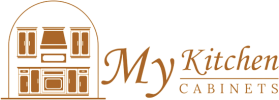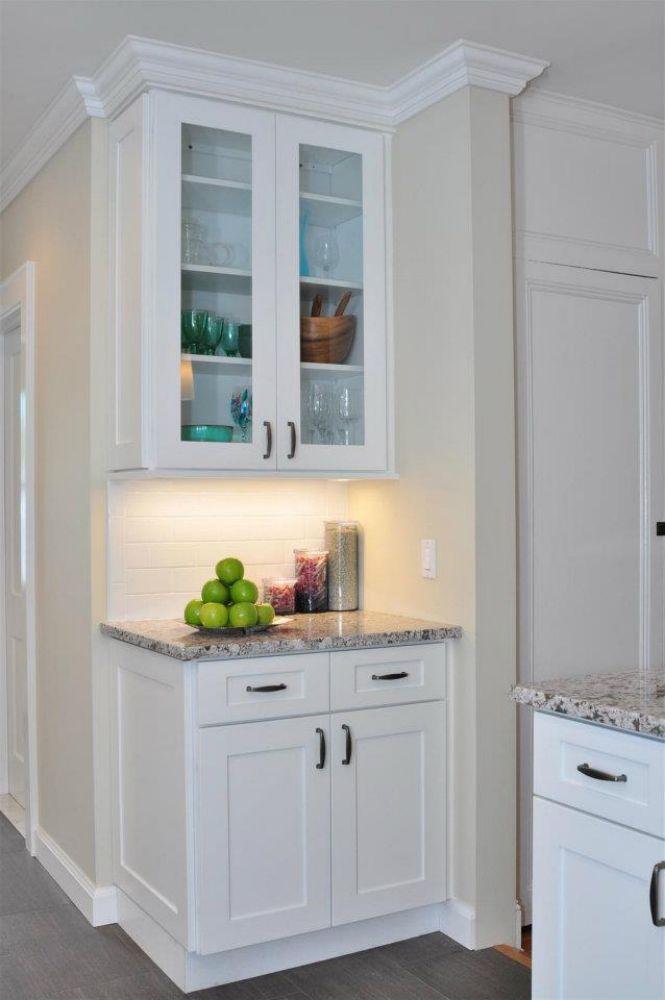Understanding Kitchen Cabinet Modifications: Can They Be Changed After Purchase?
When designing your dream kitchen, your cabinets play a central role in both appearance and functionality. However, even the most carefully planned remodels sometimes require adjustments after the cabinets have been purchased or installed. Maybe your layout needs tweaking, or you’ve decided to add new features like pull-out trays, crown molding, or extra storage. The big question many homeowners ask is: Can kitchen cabinets be modified after purchase?
At kitchen cabinets by My Kitchen Cabinets, we know that flexibility is just as important as quality. Whether you’ve purchased stock, semi-custom, or custom cabinetry, understanding what modifications are possible—and which ones aren’t—can help you make informed decisions that protect your investment and enhance your kitchen’s longevity.
Why You Might Want to Modify Kitchen Cabinets After Purchase
Cabinet modifications are often born out of necessity, style changes, or evolving needs. Even with professional design planning, life happens—and so do remodel adjustments.
Here are common reasons homeowners seek cabinet modifications:
1. Layout Adjustments During Installation
Sometimes, a measurement discrepancy or appliance change can require resizing or repositioning cabinets during installation.
2. Style or Color Updates
After seeing the cabinets in your space, you might decide the color or finish doesn’t complement your countertops or flooring as expected.
3. Functionality Upgrades
Adding pull-out drawers, lazy Susans, soft-close hinges, or interior lighting can enhance usability and bring convenience to existing cabinets.
4. Damage Repairs
Accidental dents, scratches, or water exposure can make repairs or refinishing necessary shortly after purchase.
5. Future Expansions or Renovations
You may later wish to extend your cabinetry to a new wall, build a matching island, or add pantry storage.
Understanding what type of cabinetry you purchased determines how easily these changes can be made.
The Three Main Types of Kitchen Cabinets and Their Modifiability
Not all kitchen cabinets are created equal. Their ability to be modified after purchase depends largely on whether they are stock, semi-custom, or custom-built.
1. Stock Cabinets
Stock cabinets are pre-manufactured in fixed sizes, styles, and finishes. They are mass-produced and available immediately, making them the most affordable option.
Modification Limitations:
-
Difficult to resize: Panels, doors, and drawers are made to standard dimensions and can’t be easily altered without damaging the structure.
-
Limited finish changes: Most stock cabinets use pre-applied finishes that don’t hold up well to sanding or repainting.
-
Hardware upgrades possible: You can replace handles, hinges, or knobs with new ones for a personalized touch.
-
Interior add-ons: Installing aftermarket organizers, pull-outs, or lighting is typically feasible.
Stock cabinets can handle minor modifications but are not designed for extensive structural changes.
2. Semi-Custom Cabinets
Semi-custom cabinets are factory-built but offer flexibility in sizing, finishes, and materials. They strike a balance between affordability and customization.
Modification Potential:
-
Adjustable sizing: Widths, depths, and heights can often be modified in small increments before manufacturing.
-
Finish and color options: Semi-custom lines can often be repainted, refaced, or refinished post-purchase with proper preparation.
-
Component replacement: Doors, shelves, and hardware can often be swapped or upgraded later.
-
Add-ons compatible: Matching pieces can be ordered later for expansion projects.
Semi-custom cabinets are highly modifiable, both during and after purchase, without compromising durability.
3. Custom Cabinets
Custom cabinets are built-to-order based on exact specifications, offering maximum flexibility in design, materials, and features.
Modification Potential:
-
High adaptability: Because each piece is individually crafted, panels, drawers, and trim can be rebuilt or adjusted.
-
Finish flexibility: Custom finishes can be matched and reapplied later for seamless repairs or expansions.
-
Easy additions: New matching units can be fabricated even years later.
If you anticipate future changes, investing in custom cabinetry ensures your kitchen can evolve with your needs.
Structural Considerations When Modifying Kitchen Cabinets
Cabinet modifications aren’t just about appearance—they also involve structure and functionality. Understanding these construction aspects is essential to determine what’s realistically modifiable.
1. Face Frame vs. Frameless Cabinets
-
Face Frame Cabinets: Common in American-style kitchens, these have a front frame attached to the box. Minor size alterations are possible but limited by the frame’s rigidity.
-
Frameless Cabinets: Popular in European-style designs, these rely on thicker box panels for support. They’re harder to cut down or resize after assembly.
2. Box Material and Joinery
Cabinet boxes made from solid wood or plywood are easier to modify than MDF or particleboard. Durable joinery methods (dovetail or mortise-and-tenon) can withstand reconstruction, while stapled joints are more fragile.
3. Finish Type
Painted finishes are easier to sand and recolor than laminated or thermofoil surfaces, which can peel or crack during modification.
Modifications You Can Make After Purchase
While not every alteration is possible, many updates can be done safely with professional assistance or careful DIY work.
1. Repainting or Refinishing
Repainting or staining is one of the most common ways to refresh kitchen cabinets.
-
Painted Cabinets: Can be repainted in a new color after sanding and priming.
-
Stained Cabinets: Can be restained or refinished to darken or lighten the tone.
-
Laminate Cabinets: May be refinished using specialized primers and paints designed for slick surfaces.
2. Replacing Doors and Drawers
Swapping out door and drawer fronts offers a dramatic transformation without rebuilding the cabinet boxes. New designs, materials, or finishes can modernize your space affordably.
3. Adding Trim and Molding
You can enhance visual appeal by adding crown molding, light rails, or decorative panels to existing cabinets. This creates a custom, built-in appearance.
4. Installing New Hardware
Changing knobs, pulls, and hinges can quickly modernize your kitchen. Soft-close hardware upgrades are also easy and effective.
5. Internal Storage Solutions
Install pull-out organizers, lazy Susans, sliding trays, or vertical dividers to increase efficiency. These upgrades improve function without structural modification.
6. Adding or Adjusting Shelving
If your cabinets lack adequate storage, new adjustable shelves can be added. For open designs, removing doors entirely can create a display-style aesthetic.
7. Modifying for New Appliances
If you’re upgrading to larger appliances, cabinet sections can sometimes be cut or resized. However, professional assistance is highly recommended to maintain stability.
Modifications That Are Risky or Not Recommended
While some upgrades are safe, others can compromise cabinet structure or void manufacturer warranties.
1. Cutting Down Cabinet Width or Height
Reducing cabinet dimensions after purchase can damage joinery and weaken structural integrity. It’s best to order properly sized units from the start.
2. Relocating Installed Cabinets
Moving fully installed cabinets can cause joint separation or wall damage. If relocation is necessary, hire professionals who can disassemble and reinstall without harm.
3. Removing Factory-Applied Finishes
Factory finishes are durable but difficult to strip. Attempting to sand or chemically remove them may damage veneers or weaken coatings.
4. Drilling Excessive Holes
Unplanned holes for handles, knobs, or mounting hardware can reduce cabinet lifespan and void warranties. Always measure precisely or use existing holes when possible.
5. Modifying Load-Bearing Areas
Never cut into structural parts like bottom panels, support rails, or corner braces. Doing so can compromise cabinet strength.
Working with Professionals for Post-Purchase Modifications
Even small adjustments can have big consequences when modifying cabinetry. Hiring an experienced carpenter or cabinetmaker ensures precision and safety.
Benefits of Professional Help:
-
Proper tools and materials for clean refinishing or cutting.
-
Color matching for paints and stains.
-
Reinforcement of joints and frames after modification.
-
Advice on maintaining manufacturer warranties.
At My Kitchen Cabinets, we recommend professional evaluation before major changes to ensure the modifications maintain strength and finish quality.
How to Plan for Future Modifications Before You Buy
The best way to ensure modifiability is to plan for it at the time of purchase.
1. Choose Semi-Custom or Custom Options
These cabinets offer flexibility for future add-ons or adjustments.
2. Ask About Material and Finish Compatibility
Confirm whether your chosen finish can be sanded, painted, or refinished later.
3. Keep Detailed Order Information
Store records of model numbers, finish codes, and manufacturer details. This makes reordering or matching easier in the future.
4. Consider Modular Designs
Modular cabinetry systems allow sections to be rearranged or expanded over time without full reconstruction.
5. Order Spare Parts
Request extra doors, shelves, or hardware during the initial purchase—they can be lifesavers for future modifications or repairs.
Cost Considerations for Modifying Kitchen Cabinets
The cost of post-purchase modifications depends on the scope of work and the type of cabinetry.
| Type of Modification | Average Cost Range | Notes |
|---|---|---|
| Repainting or Refinishing | $3,000 – $6,000 | Depends on kitchen size and finish type |
| New Hardware | $100 – $500 | Budget-friendly DIY upgrade |
| Door Replacement | $1,500 – $4,500 | Less expensive than full replacement |
| Internal Add-Ons | $200 – $1,000 | Pull-outs, dividers, or trays |
| Resizing Cabinets | $500 – $2,000 per cabinet | Requires professional craftsmanship |
Modifying existing cabinetry is generally less expensive than full replacement, especially when structural integrity remains intact.
Signs Your Kitchen Cabinets Can Be Safely Modified
Before starting any project, assess your cabinets’ condition and construction.
-
Solid wood or plywood boxes can withstand modifications better than particleboard.
-
Screwed joints (rather than glued or stapled) allow easier disassembly.
-
Removable trim and moldings indicate adaptability.
-
Durable finishes like polyurethane can handle refinishing without significant damage.
If your cabinets meet these criteria, modification is often safe and worthwhile.
Conclusion: Making Smart Decisions About Cabinet Modifications
Modifying your kitchen cabinets after purchase is entirely possible—but the extent of what can be done depends on the type, material, and finish of your cabinets. Stock cabinets allow for limited cosmetic upgrades like hardware changes or added shelving, while semi-custom and custom cabinets offer much more flexibility for resizing, refinishing, and functional improvements.
At My Kitchen Cabinets, we understand that your kitchen is the heart of your home, and sometimes it evolves along with your lifestyle. Our cabinetry solutions are designed to balance durability, beauty, and flexibility—allowing homeowners to make adjustments over time without compromising quality.
If you’re planning a modification, it’s always best to consult professionals who can ensure structural safety and aesthetic harmony. With the right planning, care, and craftsmanship, your cabinets can adapt gracefully to your family’s changing needs while maintaining their value and timeless appeal.
FAQs About Modifying Kitchen Cabinets After Purchase
1. Can stock kitchen cabinets be resized after purchase?
Resizing stock cabinets is not recommended. They are built to fixed dimensions, and cutting them down can weaken their structure. Instead, consider adding fillers or trim pieces to adjust the fit.
2. Can I repaint or refinish my existing kitchen cabinets?
Yes. Most wood cabinets can be sanded and repainted or stained, though laminate or thermofoil finishes require special primers. Always clean and degloss surfaces before applying new coatings.
3. Is it cheaper to modify cabinets or replace them?
In most cases, modifying cabinets is more cost-effective—especially if they’re in good structural condition. Refinishing, adding hardware, or installing new doors can give your kitchen a brand-new look for a fraction of the replacement cost.
4. Can I add new cabinets to match existing ones later?
Yes, but matching finishes and styles may be challenging. If your original cabinets came from a reputable supplier like My Kitchen Cabinets, reordering matching pieces or finishes is usually possible.
5. Will modifying my cabinets void the warranty?
In some cases, yes. Structural modifications, cutting, or repainting can void manufacturer warranties. Always check warranty terms or contact the manufacturer before making significant alterations.
Read: Are tall kitchen cabinets better for maximizing vertical storage space?
Read: What are the most popular finishes for luxury kitchen cabinets?

